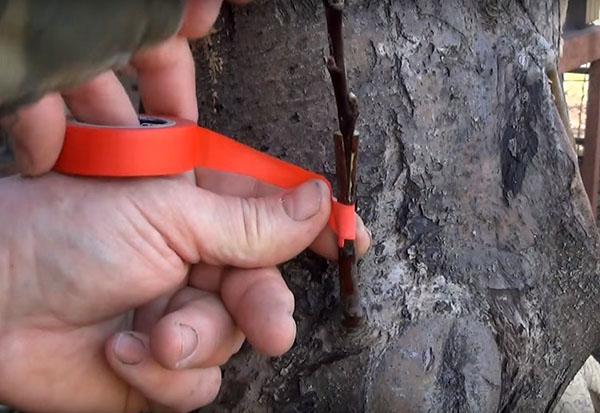How to grow several varieties on one apple tree
 The apple tree that your parents planted once gave big yields, and its fruits were quite large and sweet. But now the apple tree has aged, the period of its fruiting ends, fewer and fewer fruits are tied on the branches.
The apple tree that your parents planted once gave big yields, and its fruits were quite large and sweet. But now the apple tree has aged, the period of its fruiting ends, fewer and fewer fruits are tied on the branches.
If you want to grow modern varieties on your site, and there is no place for a new tree, then cut down the old apple tree not worth it. Plant a stalk of another variety of apples on it. Thanks to the powerful roots of the old tree, the young branch will quickly grow, and you can grow several varieties at once on one apple tree.
We plant cuttings correctly
In order for the grafting to take place, select a suitable top, that is, an even young branch growing vertically upward from the trunk or base of the crown. On the top, you need to make an even perpendicular cut 5 mm above the deciduous bud. Next, a cut is made on the top to a depth equal to three or four branch diameters and moistened with water.
Then the cutting is cut into a wedge so that it can be freely placed in the slot. In this case, it is very important not to damage the cambium, so the knife must be well sharpened, and the bark must be cut off in one movement.
Pre-soak the cutting, leaving it in water for a few minutes, for better survival.
It is advisable to choose a stalk with 5-6 buds in order for the branch to grow faster. The main number of buds should be on the outside of the tree trunk, then the young growth will be where to develop. If the buds facing the trunk wake up, their young shoots will need to be cut off.
There should be no gap between the bark of the cutting and the bark of the branch, otherwise the apple tree will not take root, so the length of the cut on the cutting must correspond to the length of the cut of the top.
It is necessary that there is no gap between the slot of the top and the handle, so the place of their connection is tightly wrapped with a special tape for inoculation to the first kidney. This tape degrades over time.
You can use electrical tape, but when the stalk takes root, it will need to be removed.
After the stalk is firmly fixed, its top (about 5 mm) must be carefully cut off and the cut must be treated with garden pitch or clay in order to reduce moisture evaporation. Some gardeners additionally put a cellophane bag on the stalk, but this is not advisable, since the process of photosynthesis is very important during the growth of the first leaves. Because of the greenhouse effect, cambium will grow more slowly.